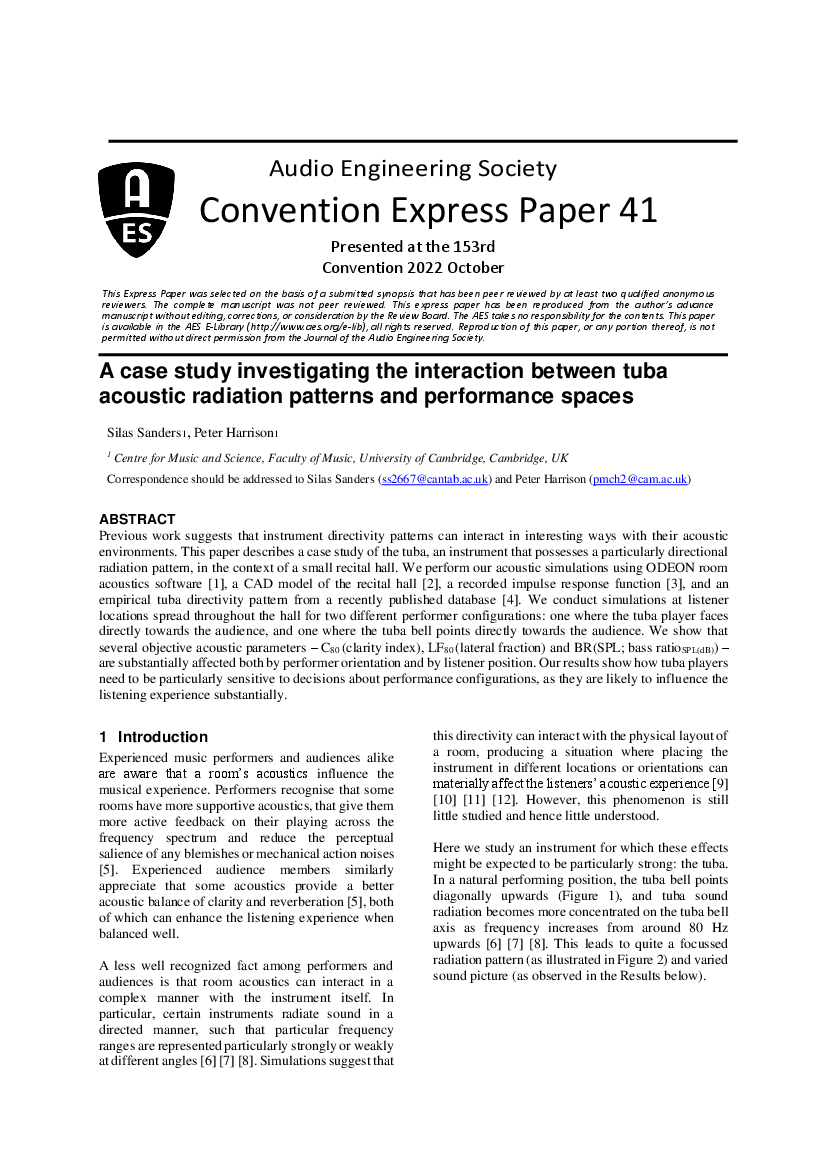Home / Publications / E-library page
You are currently logged in as an
Institutional Subscriber.
If you would like to logout,
please click on the button below.
Home / Publications / E-library page
Only AES members and Institutional Journal Subscribers can download
Previous work suggests that instrument directivity patterns can interact in interesting ways with their acoustic environments. This paper describes a case study of the tuba, an instrument that possesses a particularly directional radiation pattern, in the context of a small recital hall. We perform our acoustic simulations using ODEON room acoustics software [1], a CAD model of the recital hall [2], a recorded impulse response function [3], and an empirical tuba directivity pattern from a recently published database [4]. We conduct simulations at listener locations spread throughout the hall for two different performer configurations: one where the tuba player faces directly towards the audience, and one where the tuba bell points directly towards the audience. We show that several objective acoustic parameters – C80 (clarity index), LF80 (lateral fraction) and BR(SPL; bass ratioSPL(dB)) – are substantially affected both by performer orientation and by listener position. Our results show how tuba players need to be particularly sensitive to decisions about performance configurations, as they are likely to influence the listening experience substantially.
Author (s): Sanders, Silas; Harrison, Peter
Affiliation:
University of Cambridge, UK; University of Cambridge, UK
(See document for exact affiliation information.)
AES Convention: 153
Paper Number:41
Publication Date:
2022-10-06
Import into BibTeX
Session subject:
Room Acoustics
Permalink: https://aes2.org/publications/elibrary-page/?id=21924
(683KB)
Click to purchase paper as a non-member or login as an AES member. If your company or school subscribes to the E-Library then switch to the institutional version. If you are not an AES member Join the AES. If you need to check your member status, login to the Member Portal.

Sanders, Silas; Harrison, Peter; 2022; A case study investigating the interaction between tuba acoustic radiation patterns and performance spaces [PDF]; University of Cambridge, UK; University of Cambridge, UK; Paper 41; Available from: https://aes2.org/publications/elibrary-page/?id=21924
Sanders, Silas; Harrison, Peter; A case study investigating the interaction between tuba acoustic radiation patterns and performance spaces [PDF]; University of Cambridge, UK; University of Cambridge, UK; Paper 41; 2022 Available: https://aes2.org/publications/elibrary-page/?id=21924